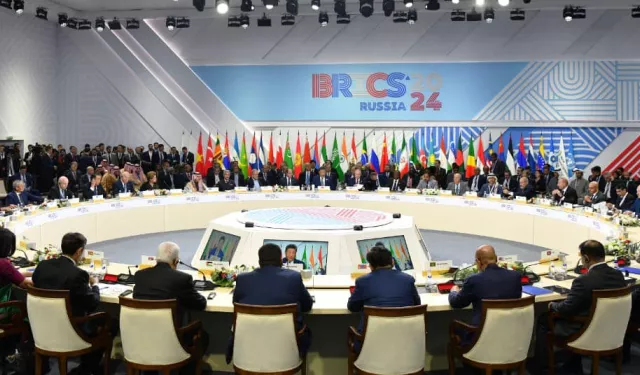
Trump, BRICS, and China’s long game
Donald Trump ended the first six months of his presidency by targeting most members of the BRICS bloc—India, Brazil, South Africa, and Russia—with punitive economic measures.
The notable exception was China. This was a striking reversal, given the significant escalation against Beijing that followed his inauguration. There is now an uneasy truce between the world’s two largest economies.
Where Trump refrained from direct confrontation with China, his administration pursued an aggressive stance towards the other founding BRICS members.
The tools went beyond tariffs. Washington interfered in domestic politics, sought leverage over regional disputes, and conveyed unmistakably that it saw BRICS as a strategic challenge.
BRICS is often portrayed as a loose coalition, discussing symbolic projects such as a common currency to rival the dollar. Even if that is unlikely in the foreseeable future, the potential trajectory unsettles Washington. If the bloc consolidates, it could erode the US-led postwar economic order that Washington has long sought to preserve.
Why Trump confronted BRICS
In his second term, Trump repeatedly clashed with BRICS capitals. South Africa faced 30% tariffs, part of a broader effort to reduce US trade deficits. But the dispute extended into politics.
Trump amplified unfounded claims about persecution of white farmers, making use of fake images and even directing that asylum be granted to the alleged victims.
Brazil encountered an even harsher response. Its exports were hit with a 50% tariff. Unusually, Trump linked any removal of the duty not to trade negotiations but to ending the trial of former president Jair Bolsonaro, the Trump look-alike accused of attempting a coup.
India, once considered a possible substitute for China in global supply chains, also became a target. Trade negotiations collapsed in August, and Trump imposed an additional 25% duty on Indian goods, raising total tariffs to 50%. He openly framed the move as punishment for India’s continued purchases of Russian oil, which were being resold on global markets.
Russia presented a different case. Trump inherited extensive sanctions from Joe Biden’s administration, imposed after Moscow’s invasion of Ukraine. Rather than ease them, he sought to use them as leverage, offering the prospect of relief in exchange for ending the war—an attempt to reshape Russian regional policy through economic pressure.
China’s opportunity to change the rules
China was the exception. Despite early clashes, Trump refrained from further escalation with Beijing. The reason was pragmatic, since China is too large and integrated into global trade to coerce easily. As both the “world’s factory” and a major creditor to the United States, Beijing holds leverage that smaller BRICS economies do not.
China has used this relative restraint to strengthen ties with its BRICS partners. It has championed enlargement of the bloc, welcomed new applicants, and positioned itself as the indispensable hub. Its strategy is to transform BRICS into a platform for rewriting the rules of trade and finance, reducing dependence on the dollar.
China is already the main trading partner for Brazil, South Africa, Russia, and India. Brazil supplies mostly agricultural products and mineral goods, while Russia, India, and South Africa provide energy and minerals.
China, in turn, processes these inputs into industrial products that compete with Western goods. That asymmetry fosters resentment, as none of these countries wants to remain permanently locked into the role of raw material supplier.
Yet, structural change inside China could moderate these tensions. Rising wages are pushing the country away from labor-intensive industries toward advanced manufacturing and technology. This creates space for BRICS partners to absorb lower-end industries, often through Chinese investment, while Beijing focuses on higher value-added sectors.
Trump’s unintended legacy
BRICS is still a diverse coalition with competing national interests. Yet Trump’s confrontational policies may have done more than any BRICS summit to foster cohesion. By weaponizing trade and finance so openly, Washington has encouraged member states to explore alternatives to the dollar-dominated system.
The central question now is whether China can recast its relationship with BRICS partners, sharing industrial capacity rather than relegating them to perpetual supplier status. This would require Beijing to tolerate reducing its trade surplus with India and to accept running deficits with countries such as Brazil, Russia, and South Africa.
Given that the relative weight of foreign trade in China’s GDP has fallen over the past two decades, Beijing may be prepared to accept this adjustment as the price of consolidating BRICS’ role in a changing global economy.
